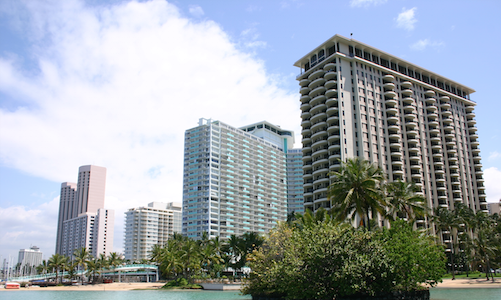Rental rates continued climbing into the new year, setting the pace for a strong performance in 2015.
Miami renters felt the sting of increased rates in January, as growth continued to surge in South Florida, according to apartment market research and analyst group Axiometrics.
Driven by the seasonal migration of new residents hailing from the northeast, which has been brutally battered by arctic temperatures and snowstorms recently, newcomers who are unable or uninterested in purchasing a home, are flocking to apartments, cashing in on the city’s coastal views and welcoming weather. The popularity, though, is pushing up prices.
In January, Miami experienced 5.9 percent rent growth, pushing the city’s average rent up $93 dollars year-over-year to $1,545. However, the pace of growth slowed considerable from a year prior, dropping nearly 200 basis points. Early year occupancy reached 96.2 percent – virtually level from that of January 2015.
Strong Growth in South Florida
Elsewhere in South Florida, apartments were booming at much more impressive levels. Axiometrics researchers found in their report that:
- Fort Lauderdale exceeded 7 percent effective rent growth for the first time since Axiometrics began reporting the metric monthly in 2009. The metro’s 7.1 percent annual rate was a 29-bps increase from December’s 6.9 percent and a 349-bps increase from January 2014. The average Fort Lauderdale rent was $1,411 last month, $96 higher than the $1,315 of January 2014. Occupancy was 95.4 percent in January 2015, a 46-bps increase from the 94.9 percent of a year earlier.
- West Palm Beach’s 8.8 percent annual effective rent growth in January 2015 was a 13-bps increase from the 8.7 percent of December 2014, and a 496-bps lift from the 3.8 percent of January 2014. The average West Palm Beach renter paid $1,408 in January, $133 more than 12 months earlier. Occupancy was 95.8 percent in January 2015, a 44-bps increase from January 2014
More to Come
Stephanie McClesky, vice president of research for Axiometrics, said that while the Magic City’s relative sluggishness may be the result of the area’s new supply, both Ft. Lauderdale and West Palm are “continuing their surge.”
“The increased occupancy levels in those two divisions bodes well for continued high rent growth,” she said.
For Miami, however, a slow down in the pace of rent growth isn’t necessarily a complete negative. As we reported last October, rents in Miami are already approaching overvalued. Rates are so high, in fact, that in 2014’s third quarter, homeownership was 40 percent more affordable than renting – one of the highest rates among major metros.
Rates will likely continue climbing throughout 2015, but a slow down could mark an eventual return to stability.

